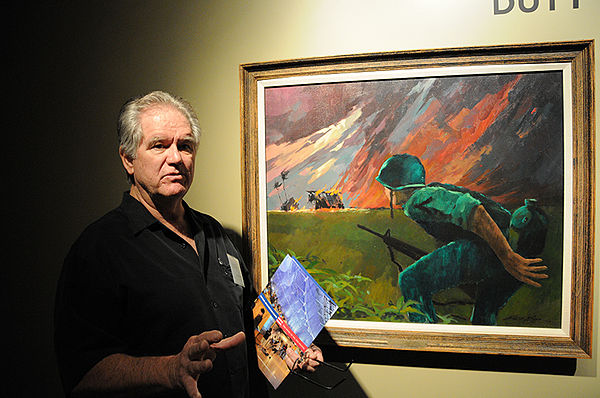Combat Gallery Sunday : The Vietnam Combat Artists Program
Much as once a week I like to take time off to cover warships (Wednesdays), on Sundays (when I feel like working), I like to cover military art and the painters, illustrators, sculptors, and the like that produced them.
Combat Gallery Sunday : The Vietnam Combat Artists Program
Usually on CGS, we cover individuals, but this particular weekend is dedicated to the 40~ soldier artists of the U.S. Army’s Vietnam Combat Artists Program:
Between 15 AUG 1966 and 14 JAN 1970, nine Combat Artist Teams (CATs) operated in Vietnam traveling with various units, gathering information and making sketches of U.S. Army related activities. They would embed with troops on the ground for 60 days then rotate to Schofield Barracks, Hawaii for 75 days to decompress and paint from their sketches, photographs and imagination. The work then became government property curated by the U.S. Army Center of Military History to help document the war.
Private First Class Jim Pollock was sent to Vietnam as a soldier artist on US Army Vietnam Combat Art Team IV from Aug. 15 to Dec. 31 1967 and has a 26 page article (with more than a dozen varied images) of his experience online. In this work he described the varied nature of the art produced.
The idea of rotating teams of young soldier-artists from a variety of backgrounds and experiences through Vietnam was innovative. What was even more remarkable is that these soldier-artists were encouraged to freely express and interpret their individual experience in their own distinct styles. The artists responded enthusiastically to their artistic free reign, and the resulting products were wide-ranging and comprehensive.
Styles and media used were as diverse as the artists themselves, some chose detailed literal images while others preferred expressive almost abstract explosions striving to replicate the horrors of war. Certainly, a lasting legacy of the army’s soldier art program is that it helped bring military art into the modern era.
Much of their work is on display across the nation in various military museums, installations and federal buildings while Pollocks’s essay is part of the Library of Congress and he continues to be outspoken about his time in South East Asia as well as the program as a whole.
Much of the paintings are available online at the CMH’s website.
Thank you for your work, gentlemen.


















Pingback: Happy Birthday, Snake, the hardest laboring gunship in the Free World | laststandonzombieisland